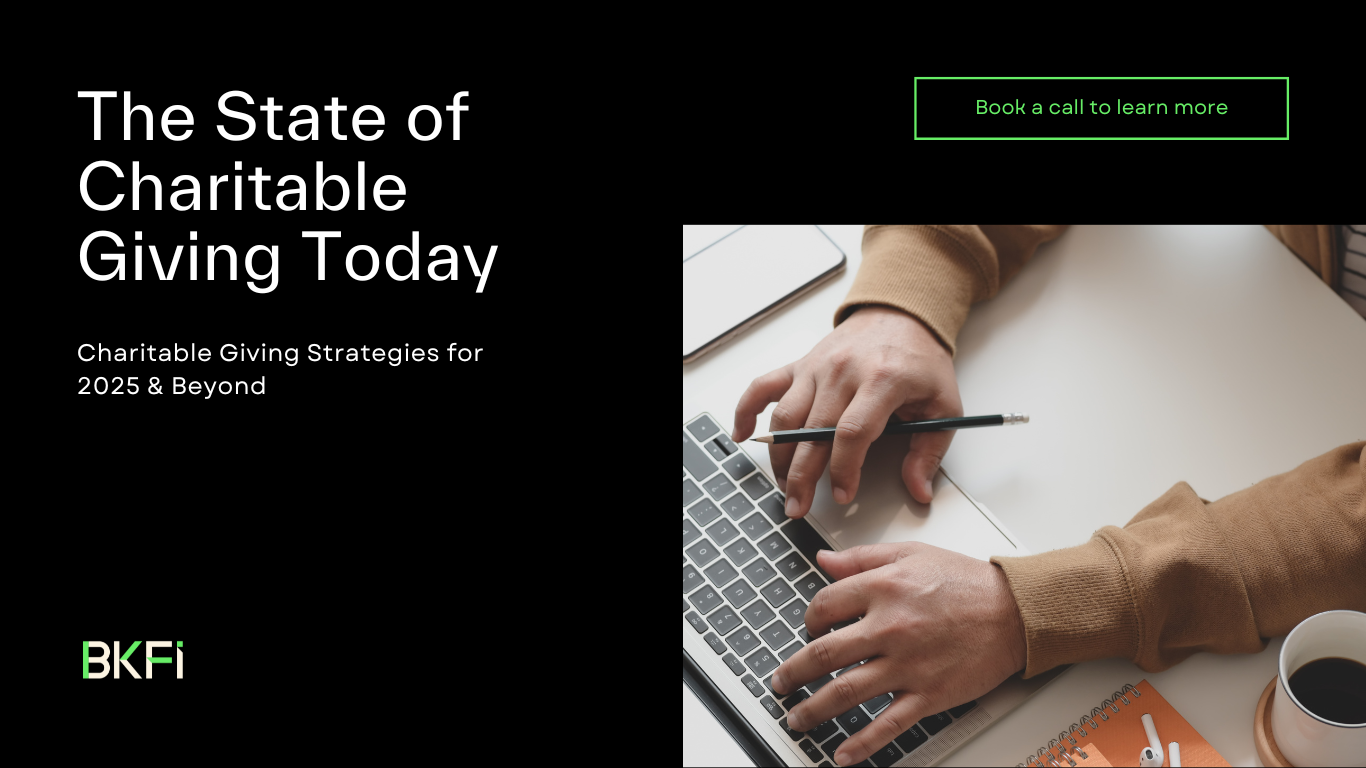Charitable Giving Strategies for 2025 & Beyond
From funding groundbreaking research to supporting your local animal shelter's quest to find every furry friend a home, there's something deeply satisfying about putting your money to work for causes you believe in.
But thanks to the Tax Cuts and Jobs Act (which raised the standard deduction to $14,600 for single filers and $29,200 for married filing jointly in 2024, and $15,000/$30,000 for 2025), many donors are scratching their heads trying to figure out how to maximize both their impact and tax benefits.
That’s where we come in. Implementing a charitable giving strategy helps your dollars work harder for the causes you care about — but — you have to plan ahead.
To see what our co-CEOs said on the topic, check out the Charitable Giving Podcast Episode #124.
Think of charitable giving like that 1000-piece puzzle your in-laws gave you last holiday season - each piece needs to fit just right into your broader financial picture.
The increased standard deduction means fewer people benefit from itemizing charitable donations but fear not! There are still plenty of ways to be both generous AND tax-savvy.
Strategic Giving Approaches to Consider
Beyond Cash Donations: Level Up Your Giving Game With Appreciated Investments
Sure, writing a check is easy (and hey, charities love cash!), but donating appreciated investments might be the secret sauce you've been looking for:
Potential to deduct the fair market value up to 30% of AGI for securities
May help manage capital gains considerations on long-held shares
Short-term holdings? Better to hang onto those until they qualify for long-term treatment
Organizations receive the full value of your contribution
Here's a real-world example that'll make you look like a financial genius at your next dinner party: Say you want to donate $10,000 and have some highly appreciated tech stock sitting around from that great investment decision you made years ago.
Instead of selling and donating cash, gifting the stock directly could save you a bundle in capital gains taxes. Your charity gets the full value, and you get to feel extra smart about your tax-efficient philanthropy.
Timing Your Gifts: The "Bunching" Strategy
Remember playing double-dutch as a kid? Timing was everything. The same goes for charitable giving thanks to that pesky standard deduction threshold. Enter "bunching" - the art of concentrating multiple years of charitable gifts into a single tax year. This is just one tax planning opportunity related to charitable giving.
Picture this: Instead of giving $10,000 every year like clockwork, you become the master of timing and drop $30,000 every third year instead. Suddenly you're jumping over that standard deduction threshold like a pro in high-giving years and cruising with the standard deduction in others. Your charities still get the same support (just differently timed), and you might snag some extra tax benefits. Win-win!
The QCD Game-Changer for Retirees
For those over 70½, Qualified Charitable Distributions (QCDs) let you donate up to $100,000 annually straight from your IRA to charity. Think of it as the ultimate charitable giving shortcut:
Counts toward your RMDs (now starting at age 73)
Skips right past your adjusted gross income
Works even if you're taking the standard deduction
Shrinks your taxable IRA balance
Direct Gifts vs Donor-Advised Funds: Pick Your Player
Direct gifts are like sending a text - quick, simple, done. Donor-advised funds (DAFs) are more like creating a strategic group chat for your charitable giving:
Take the deduction when you fund the DAF (up to 60% of AGI for cash, 30% for securities)
Grant funds to charities on your own timeline
Donate all kinds of assets (even that cryptocurrency you bought in 2017)
Keep all your charitable receipts in one place
Get the family involved in giving decisions
Charitable Trusts: The Advanced Level
For the super heroes in the room (you know who you are) with $250,000+ in charitable goals, charitable trusts offer some next-level planning opportunities:
Charitable Remainder Trusts: Get income now, let charity benefit later
Charitable Lead Trusts: Help charities now, leave assets to family later
Great for estate planning and managing complex assets
Building Your Legacy
Want your charitable impact to last longer than that fruitcake your aunt sends every holiday season? Consider these legacy planning moves:
Update your will to include charitable bequests
Name charities as beneficiaries of retirement accounts (they don't pay income tax!)
Create a family giving tradition through a DAF or family foundation
Review and update your beneficiary designations regularly (because things change)
Making It Happen: Your Giving Game Plan
Get Clear on Your Mission
Which causes make you want to geek out and change the world?
What kind of impact gets you excited?
How hands-on do you want to be?
Check Your Resources
What can you give (cash, stocks, crypto, that vintage car collection)?
When makes sense for your tax situation?
How much flexibility do you need?
Pick Your Strategy
Direct gifts for simplicity
DAF for flexibility
Trust for complex situations
Mix and match like a charitable giving DJ
Make It Official
Time those contributions strategically
Choose the right assets
Keep the required records (future you will thank present you)
Review annually
Saving on taxes is great, but at the end of the day, charitable giving should make you feel good about supporting causes you care about. The tax benefits are just the cherry on top of your philanthropic sundae.



